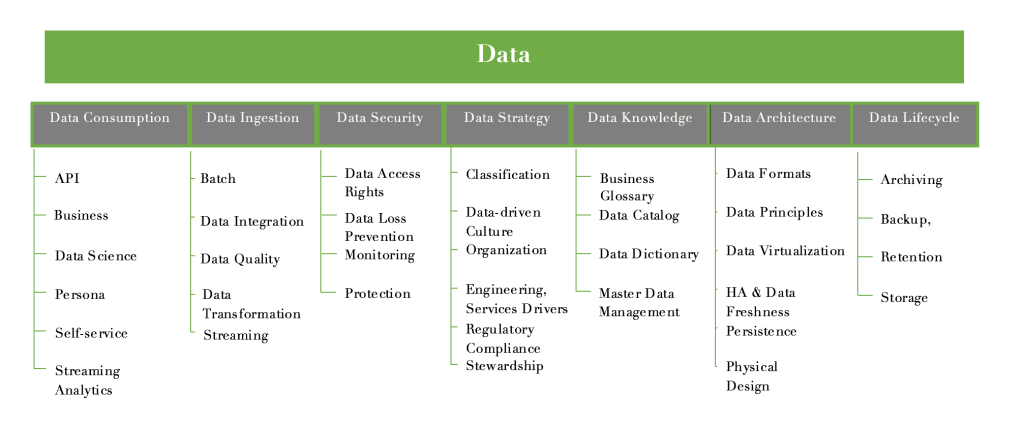Launching a data-first transformation means more than simply putting new hardware, software, and services into operation. True transformation can emerge only when an organization learns how to optimally acquire and act on data and use that data to architect new processes.
The data-first transformation journey can appear to be a lengthy one, but it’s possible to break it down into steps that are easier to digest and can help speed you along the pathway to achieving a modern, data-first organization.
Key features of data-first leaders
A recent report by Enterprise Strategy Group, commissioned by Hewlett Packard Enterprise, explains why data-first thinking matters: because they move faster than their competitors. Data-first leaders are:
- 11x more likely to beat revenue goals by more than 10 percent.
- 5x more likely to be highly resilient in terms of data loss.
- 4x more likely to have high job satisfaction among both developers and data scientists.
- 3x more likely to prioritize applications over infrastructure.
- 20x more likely to beat their competitors to market with innovation, often by a significant amount of time.
Source: “What Sets Today’s Data-First Leaders Apart from the Rest,” ESG YouTube video, posted Jan. 13, 2022
1. Create a CXO-driven data strategy
A data-first strategy means a business strategy that is enabled by objective data. This must be developed from the top because it requires commitment as well as cultural change. And it won’t happen overnight.
The strategy should put formalized processes in place to quantify the value of different types of information, leveraging the skills of a chief data officer (CDO), who should form and chair a data governance committee. Mandatory participants should include people from data science and analytics, data management, and information security, as well as key line-of-business (LOB) functions. The CDO’s job is to encourage the development of better data-first processes and formally adopt analytics and other tools across the organization.
2. Embrace data truths
Before an organization gets too far down the path of transformation, it must understand numerous fundamental considerations that can help frame the approach:
Data is a core asset. Consider organizations such as Facebook and Google. There is a vast difference between their market capitalization and the value of their tangible assets. The rest represents the market’s expectation of future earnings potential. What portion of that number should be attributed to data? Will data someday appear on the balance sheet explicitly? It’s crucial to treat data for what it is: a core asset.
Data has gravity. It is also everywhere: in data centers, colocations, clouds, and mostly at the edge. Strategically, it follows that processing and acting on data where it is created, predominantly at the edge now, will lead to faster and more efficient results. The challenge is formalizing that in terms of people, process, and technology. Our natural tendency is to try to put our arms around data, protect it, store it, and bring it into one place where it can be controlled. That’s no longer viable, and that fact needs to be faced.
Data has rights and sovereignty. From a policy perspective, the organization needs to mature beyond a basic awareness and definition of data compliance requirements (which typically holds that local operations make data “sovereign” by default) to a more refined, data-first model that incorporates corporate risk management, regulatory and reporting issues, and compliance frameworks. Automation can help to manage the approval, auditing, and enforcement aspect of these emerging rules, though organizations must pay attention to new legislation that emerges when new sovereignty regulations are passed.
Data must be unified and available. Redundant data, wrong data, missing data, data stuck in silos—the list goes on. Data is of limited value if it’s not unified and available. Data needs to be cleansed, reconciled, and integrated. That requires a comprehensive data management system that can accelerate business insights by operationalizing data and making it easier to exploit.
Data, not technology, drives the IT operating model. Digital engagement of customers and the workforce is where value is created, connecting the physical world to the digital world. Data provides the insight and control necessary to do this, not simple technology. Data-first and cloud-first thinking helps to answer key questions: How do we adapt to support a redefined digital experience? Who – and how – will they do it?
3. Determine the ideal level of data-first maturity
What level of data maturity can the organization achieve? You don’t have to become the next Google to be a data-first operation, and your strategy should reflect this. Table 1 shows the typical levels enterprises go through on the path to data-first maturity, as defined in the HPE Edge-to-Cloud Adoption Framework.

Ideally, any data-first organization will likely want to reach at least level 3, with aspirations to move higher in level over time. Remember that data is but one component of a wider operating structure that needs to address strategy, security, innovation, people, and more. Data strategies developed in a vacuum without consideration of these other business functions run the risk of being impossible to implement, ultimately representing a wasted investment.
4. Prioritize your investments
A data-first approach is based in value creation, but to succeed, it must be developed hand in glove with technology modernization, as well as an appropriate shift in skills, processes, and practices.
Because data is such a broad territory, a common language to identify the potential areas to address will maximize the chances of forward motion. By identifying the principal sub-domains, you can develop a more precise understanding of your organization’s strengths and weaknesses, and better prioritize the investments required to advance your maturity.
Through years of data engagements across industry verticals, HPE has identified seven data maturity sub-domains, listed in Figure 1, that can be prioritized, depending on your organization’s current state:
- Data Strategy and Governance: Developing a data-driven culture, including the product and service drivers that determine how data is used.
- Data Knowledge: Establishing a common understanding and language of how data is to be used across the organization.
- Data Lifecycle Management: Implementing the processes and technologies required to support scalable and cost-effective management, retention, and protection.
- Data Security: Achieving authentication, access control, and encryption without negatively impacting productivity.
- Data Ingestion and Processing: Ensuring that data quality, streaming, and transformation capabilities support your decision-making needs.
- Data Architecture: Establishing the physical and virtual design principles that govern how data is formatted and organized.
- Data Consumption and Distribution: Providing tools that give business units, teams, and individuals self-service access to the right data and analytics capabilities.

Figure 1: Data maturity capability areas in the HPE Edge-to-Cloud Adoption Framework
The road ahead
Should you start with a migration to the cloud or a deep dive into data? These approaches are actually complementary.
While modernizing technology is a goal of both approaches, organizations must realize the need to address technical debt, a term that captures the value of all the technology work a company needs to do in the future to solve the complications created by old and outdated systems. CIOs measure technical debt against the value of their entire technology estate. For larger organizations, this can translate into hundreds of millions of dollars of “unpaid” debt.
A cloud migration is one of the most effective ways to pay down this debt quickly, although such migrations are not in and of themselves a perfect solution. Many an organization has moved to the cloud only to find that multigenerational IT silos still persist as part of a multi-cloud architecture. As such, a data-first transformation must re-examine architectural needs in full rather than simply performing a lift and shift of workloads from on-premises machines to those in the cloud.
The transformation to becoming a data-first enterprise can appear daunting. But it is possible to break down the journey into identifiable steps that facilitate prioritization and allow for continual and measurable improvement. Having a common understanding of the role of data in your organization and a common language to define priorities can greatly help advance your initiatives.
Get started on your journey toward achieving a modern, data-first organization, today. Contact HPE to learn more.
___________________________________
About Ian Jagger

Jagger is a content creator and narrator focused on digital transformation, linking technology capabilities expertise with business goals. He holds an MBA in marketing and is a Chartered Marketer. Today, he focuses on digital transformation narrative globally for HPE’s Advisory and Transformation Practice. His experience spans strategic development and planning for Start-ups through to content creation, thought leadership, AR/PR, campaign program building, and execution for Enterprise. Successful solution launches include HPE Digital Next Advisory, HPE Right Mix Advisor, and HPE Micro Datacenter.
Read More from This Article: 4 Steps to Data-first Modernization
Source: News

